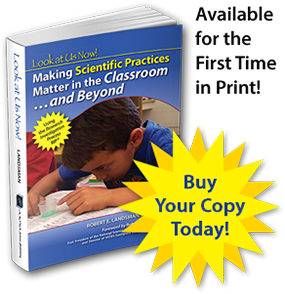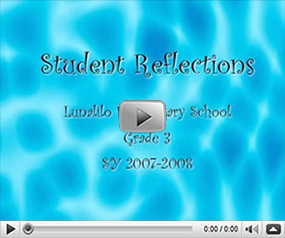Full and Open Inquiry
The classrooms and inquiries featured in Look at Us Now! Making Scientific Practices Matter in the Classroom…and Beyond portray the RIP® model for scientific inquiry-based education. Together, they paint a picture of how elementary, middle, and high schools use this inquiry-based critical thinking approach to provide opportunities for students to engage in “full” and “open” inquiry, or “partially” open inquiry (especially during initial implementation in the classroom and for primary grades).
“Full” inquiry is when students engage in all of the components involved in a scientific investigation (research investigation). “Open” inquiry is student-centered (initiated by students, the method to be used designed by students and/or with significant student input, and conducted by students) and of interest and/or of relevance to the student. The ultimate goal of Research Investigation Process (RIP®) based inquiry is to have students lead the thinking and performance of actions required within all of the components of the investigation (“completely open”).
The RIP® model of scientific inquiry is designed to foster development and application of scientific practices in and for thinking and learning in any content area. RIP® enables and facilitates the learner to not only engage in every aspect of the investigation, but also to assume a leadership role in all aspects of the investigation, from conception through culmination of the investigation process. This “full and open inquiry” experience is depicted again and again throughout the chapters of Look at Us Now!
One of the primary objectives of this book is to illustrate that achieving “full and open” scientific inquiry that leads to successful learning can be attained with kindergarten to twelfth-grade special education to general education students across science and non-science content areas when it aligns well with the national standards [National Science Education Standards (NSES) and Next Generation Science Standards (NGSS)] and when the More Emphasis conditions (National Research Council, 1996) are established. Look at Us Now! Making Scientific Practices Matter in the Classroom…and Beyond is filled with examples of elementary and secondary level full and open inquiry involving standards-based content in a broad range of areas in addition to science. It features students spanning a wide range of abilities and socioeconomic and cultural demographics.
"Students do not come to understand inquiry simply by learning words such as ‘hypothesis’ and ‘inference’ or by memorizing procedures such as ‘the steps of the scientific method.’ They must experience inquiry directly to gain a deep understanding of its characteristics” (National Research Council, 2000, p. 14). Landsman and Kamimura in Chapter 1 (pp. 7-8) write, “Engaging in ‘full and open’ inquiry (NRC, 2000a) using the RIP® is consistent with the scientific inquiry and scientific practices described in the NSES and NGSS and is characterized by investigations based on scientific questions students pose that lead them to designing tests of their hypotheses, with students collecting data, analyzing it, and using it as evidence to support or refute their explanation; students demonstrating application of scientific and other (i.e., language arts and social studies, etc.) content knowledge to their results and communication of this in their discussion and conclusions (criteria adapted from NRC, 2000a, p. 29)"
Your Shopping Cart
Ordering five (5) or more copies? Contact us for a special volume discount.
Read the Foreword
Enter your name and e-mail address below for immediate access to read the complete Foreword, written by Dr. Robert E. Yager, in its entirety.


 ANOVA Science
ANOVA Science